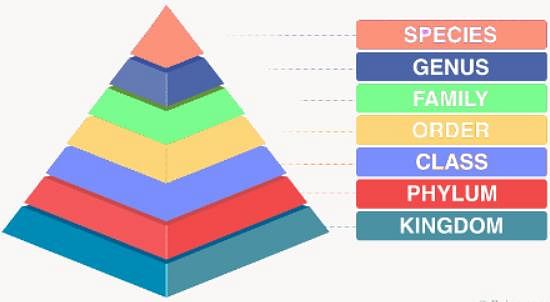NEET Exam > NEET Tests > Biology Class 11 > Test: The Living World- 1 - NEET MCQ
Test: The Living World- 1 - NEET MCQ
Test Description
20 Questions MCQ Test Biology Class 11 - Test: The Living World- 1
Test: The Living World- 1 for NEET 2024 is part of Biology Class 11 preparation. The Test: The Living World- 1 questions and answers have been
prepared according to the NEET exam syllabus.The Test: The Living World- 1 MCQs are made for NEET 2024 Exam. Find important
definitions, questions, notes, meanings, examples, exercises, MCQs and online tests for Test: The Living World- 1 below.
Solutions of Test: The Living World- 1 questions in English are available as part of our Biology Class 11 for NEET & Test: The Living World- 1 solutions in
Hindi for Biology Class 11 course. Download more important topics, notes, lectures and mock
test series for NEET Exam by signing up for free. Attempt Test: The Living World- 1 | 20 questions in 20 minutes | Mock test for NEET preparation | Free important questions MCQ to study Biology Class 11 for NEET Exam | Download free PDF with solutions
Detailed Solution for Test: The Living World- 1 - Question 1
Test: The Living World- 1 - Question 2
A branch of biology which deals with the identification, nomenclature and classification of organisms is called:
Detailed Solution for Test: The Living World- 1 - Question 2
| 1 Crore+ students have signed up on EduRev. Have you? Download the App |
Detailed Solution for Test: The Living World- 1 - Question 3
Detailed Solution for Test: The Living World- 1 - Question 4
Detailed Solution for Test: The Living World- 1 - Question 5
Test: The Living World- 1 - Question 6
The taxonomic hierarchy, from broadest to most specific, consists of the following categories:
Detailed Solution for Test: The Living World- 1 - Question 6
Detailed Solution for Test: The Living World- 1 - Question 7
Detailed Solution for Test: The Living World- 1 - Question 8
Detailed Solution for Test: The Living World- 1 - Question 9
Detailed Solution for Test: The Living World- 1 - Question 10
Test: The Living World- 1 - Question 11
Which of the following is less general in characters as compared to genus?
Detailed Solution for Test: The Living World- 1 - Question 11
Test: The Living World- 1 - Question 12
The scientific name of an organism is when handwritten in:
Detailed Solution for Test: The Living World- 1 - Question 12
Detailed Solution for Test: The Living World- 1 - Question 13
Detailed Solution for Test: The Living World- 1 - Question 14
Test: The Living World- 1 - Question 15
Select the correctly written scientific name of Mango which was first described by Carolus Linnaeus.
Detailed Solution for Test: The Living World- 1 - Question 15
Test: The Living World- 1 - Question 16
What is the distinguishing factor used to categorize families among plants?
Detailed Solution for Test: The Living World- 1 - Question 16
Test: The Living World- 1 - Question 17
In a hierarchical system of classification of plants, which of the following taxonomic rank ends in ‘aceae’?
Detailed Solution for Test: The Living World- 1 - Question 17
Detailed Solution for Test: The Living World- 1 - Question 18
Detailed Solution for Test: The Living World- 1 - Question 19
Detailed Solution for Test: The Living World- 1 - Question 20
|
181 videos|361 docs|148 tests
|
Information about Test: The Living World- 1 Page
In this test you can find the Exam questions for Test: The Living World- 1 solved & explained in the simplest way possible.
Besides giving Questions and answers for Test: The Living World- 1, EduRev gives you an ample number of Online tests for practice



















